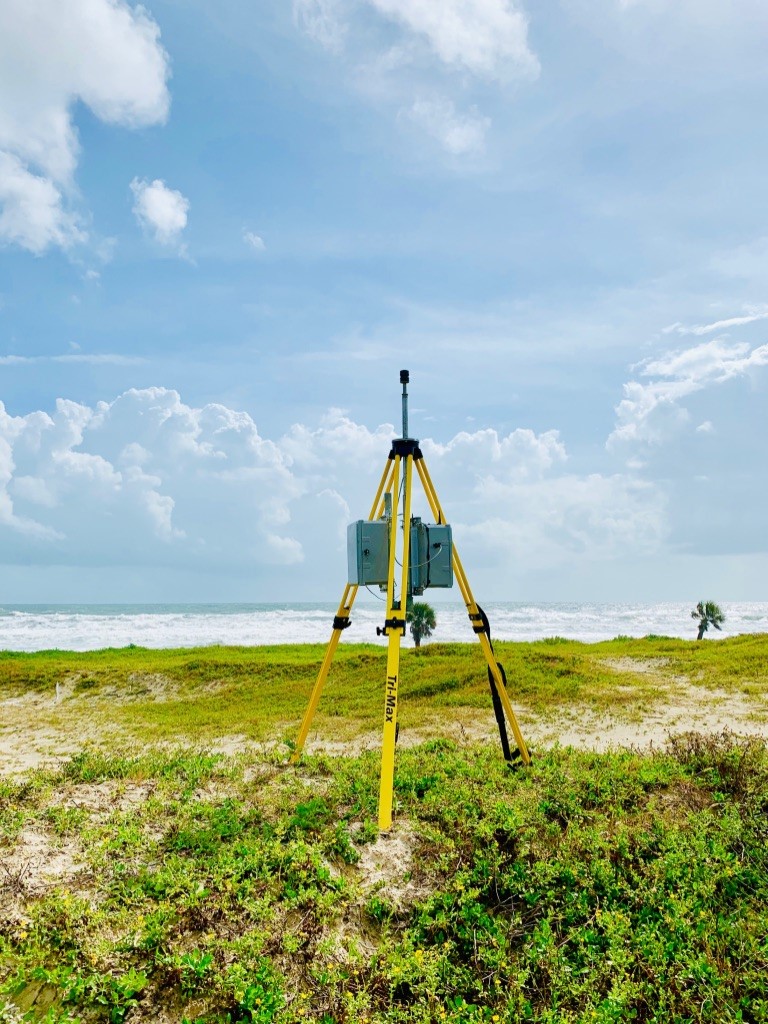Adaptable Measurement Assets
Mobile StickNets
 StickNet observational platforms in the field.
StickNet observational platforms in the field.These student-developed, versatile rapid-deployment 2.5 m meteorological observing platforms are used to monitor thunderstorm and hurricane events as they happen and to relay information in real-time to decision makers. The platforms are ideal for data collection within the hazardous regions of severe weather events since they can be deployed rapidly, operate autonomously and are designed to withstand significant wind conditions.
Originally developed in 2005 and called "StickNet" for its resemblance to a stick figure, the fleet has now grown to 48 platforms distributed between four covered trailers. This mobile observing network is capable of gathering a variety of meteorological information including dryline properties, urban wind flows, density currents, synoptic wind events and terrain-induced flows. Each platform can be deployed by two individuals in the manner of minutes.
The StickNet platforms have traveled to the Atlantic and Gulf coasts to observe multiple hurricane landfalls as well as more than 1,000 platform deployments across the U.S. for thunderstorm and tornado related studies. The highest wind speed recorded by a StickNet platform to date is 124 mph during the 2020 landfall of Hurricane Laura in Louisiana, but researchers believe that they may be able to withstand wind speeds in excess of 140 mph.
Studying severe weather and tornadoes can be tricky as these weather events are often "small" enough to just fit between permanent weather observation stations which means that they can "slip through the net" data-wise.
StickNets and Ka-band radar trucks are able to "zoom" in and focus on these gaps in the data map whilst allowing other equipment and personnel to stay a safe distance away from the dangerous weather.
By filling in the data "gaps", both the Ka-band radar trucks and the StickNet platforms provide a much more in-depth picture of the storm/weather event evolution over a period of time. This can lead to more accurate storm forecasts which may mean reduced wind damage and lower loss of life.
The StickNet platforms measure temperature, relative humidity, barometric pressure, and wind speed/direction at a frequency of one to ten samples per second. The on-board battery system can power each platform for roughly one week of continuous operation. Each StickNet platform can store its own raw data while also offering real-time summary statistics as well as status updates via text messaging using on-board GPS and cell phone communications solutions.
Learn more about the platform's specifications.
Watch a video about our ATMO team in action installing StesoNet sites during the VORTEXSE project.
National Wind Institute
-
Address
1009 Canton Ave., MS 3155 Lubbock, TX 79409-3155 -
Phone
National Wind Institute - 806.742.3476; Renewable Energy - 806.742.6284 -
Email
National Wind Institute - nwi@ttu.edu; Renewable Energy - windenergy@ttu.edu
